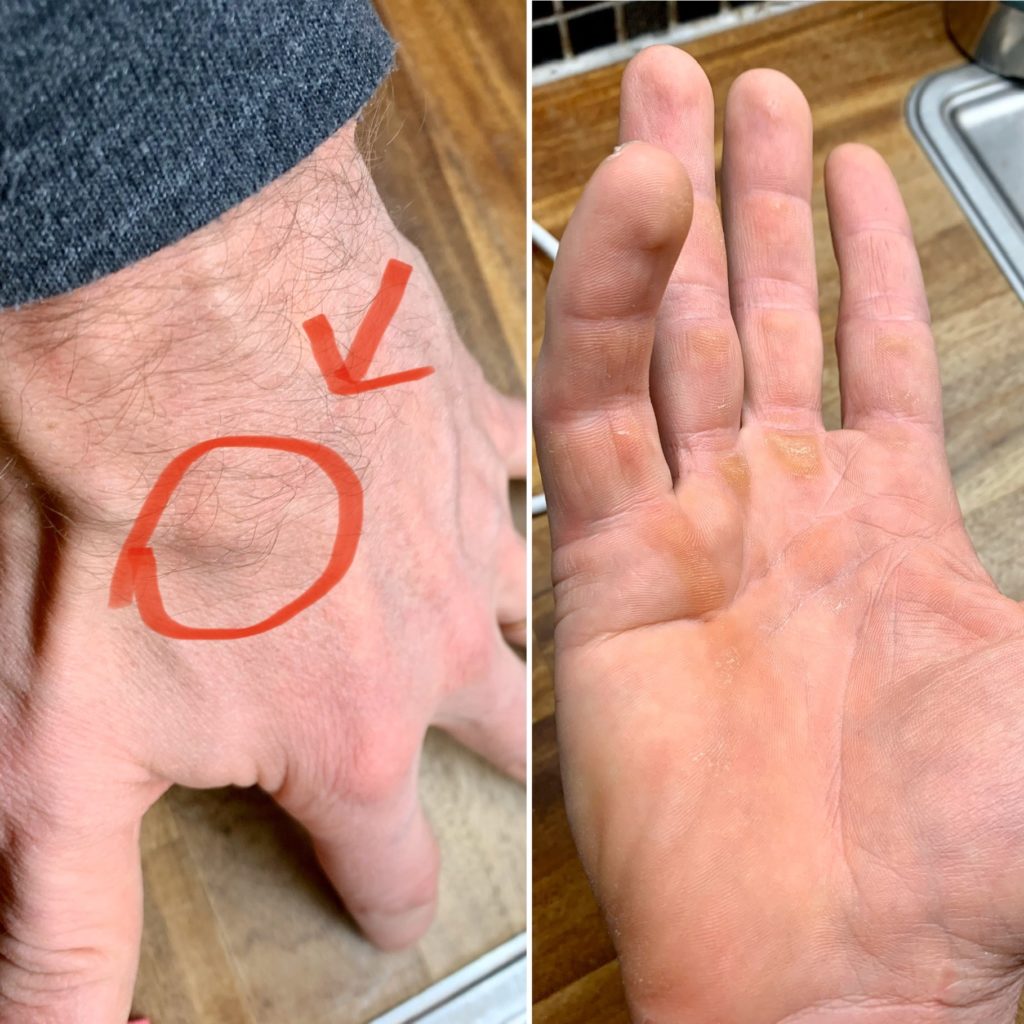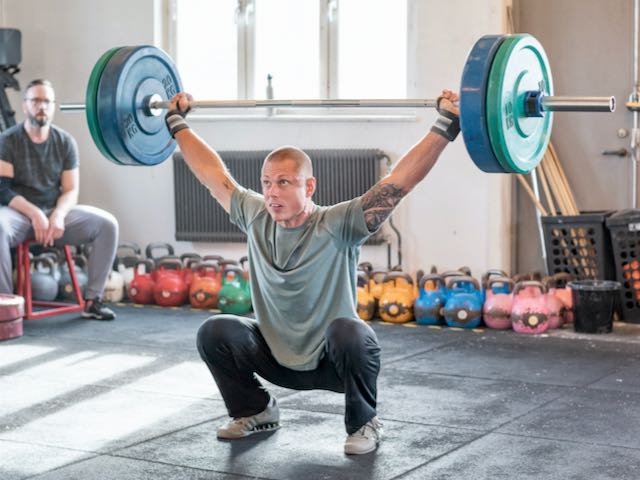Let’s take a short detour before continuing on the series on coaching and talk about something very dear to me: the snatch and why it is important in a strength and conditioning program.
Part of my work is as a weightlifting trainer. I teach “the lifts”, meaning the snatch and the clean & jerk, as a part of my job to build better athletes and as a educator employed by Eleiko, the leading manufacturer of high-quality barbells in the world. I am heavily invested in them and knowledgeable on when they are useful and when they are not.
But that does not fully explain my love for the lifts: When I’ve been injured (and I have been injured many times since I have been doing sports for almost 40 years) I have always been the most worried when I have not been able to do these specific lifts, and particularly the snatch. Going from training hard to lift as many kilos as possible (despite that being quite few) I have, when faced with the possibility of never again snatch a barbell, almost been depressed. I am not meaning to reduce the people that actually have this psychological diagnosis, but it’s the only way I can describe just how much I love the movement of the snatch. And how strong my drive is to be able to do it again.
I’ve always worked back to it, and every time my efforts to lift aesthetically better, capturing and getting energized by the rapid coordination under load, the display of ease and effortlessness when you get it right, for me it’s poetry in motion. The weight have not mattered to much to me the last couple of years, I was never that strong anyway. And by no means is my technique perfect. But I can still remember those snatches where I just got that out-of-body feeling of weightlessness only to come back to my senses sitting in a deep squat, balanced both down into the floor and up against the bar.
Many more times than I would have liked it to be the last couple of years I’ve been at the doctor where the phrase “too bad that broke out when you was this young” has been spoken. And while already 45 this year, it’s still a little too early for some of the hereditary diseases I carry with me. One of them is Dupuytren’s contracture which is more common in the Nordic countries than anywhere else in the world, and is a condition in which one or more fingers become permanently bent in a flexed position. I have always known that this might impair my ability to lift at some point, and it surely affect my gripping ability to some extent already.

But it was not this that put a stop to my snatches, but two bones having gotten crushed together and now forming a large osteophyte (bony projection) on the top of my left hand. This affects my extension of the wrist causing my quite some pain when extending together with radial deviation and loading at the same time.
Every time I’ve snatched the barbell pulls the wrist into such a position and I experience pain, both acutely when I do the movement as well as the coming days and that is why I haven’t snatched a barbell since early 2019. Regardless of how silly it would be to say that I must to be able to do what I help my athletes to do in order to be a good coach, I can’t help but feeling exactly that.
So late last year I made an effort to check it out thoroughly with x-rays of all the different types, analyzed by all the doctors. And it does not look like I can fix the damn wrist. Not only that but there are much more problems with my joints and apparently “you will be in quite some pain at some point of your life”. Well, that I don’t know but I’ll cross that bridge if I get there.
When it comes to training there are alternatives. Actually quite good alternatives, and some coaches even thinks that the olympic lifts are far over-valued tools in the coaches toolbox. The normal arguments against them are
- They take to long time to learn – the lifts are complex, perhaps the most complex lifts that there is, and that the time learning them could be better invested in other things.
- There are better options for power – loaded jumps create more force at a faster rate.
- True ballistic/throwing/tossing options are better – lifting barbells require deceleration before the catch.
- Mobility restrictions make them hard to perform to it’s full extent, and some mobility restrictions (as poor ankle dorsiflexion) almost makes the deep catch impossible.
And I would agree with the above mentioned objections apart from the time to teach them – maybe that says more about teaching ability than the lifts usefulness? But I do all the jumping: loaded, unloaded and assisted. And I do a wide variety the ballistic movements. I do this every session in the gym, because I agree that they are better as primary exercises to improve rate of force development.
This is just one example of one of all those exercises (by the way, jumping with heavy medicine balls is brilliant, I don’t know why I’ve never seen anyone do it – much easier to let go of at the top of the jump to save from the loaded landing than with dumbbells or trap bars).
“An efficient pattern catches this weight, not a group of muscles. This amazing feat of power and skill cannot be done without near perfect flexibility and perfect application of coordination, quickness and power. This is mobility and stability at its finest, working behind the scenes so the prime movers get all the usual credit.”
Gray Cook
Regardless of what you think of movement screenings as the one advocated by Gray Cook in his “Movement” book, you can’t really disagree with the thoughts on the olympic lifts? When you drop the notion that they must be primary lifts, and instead think of them as the perfected assistance lifts providing you with everything you need when it comes to teach the body to leverage it’s muscular systems.
- It’s an amazing joint screening tool – if you can catch a bar deep and correctly provide exactly the pressure needed to sit upright there you are OK.
- It reinforces muscular balance for other heavy training.
- It build resilience in the entire kinetic chain, from feet to shoulders.
- The demands of coordination provide a foundation on which will favor all other training.
The more time and energy you can put into the primary lifts the better and faster adaptation you will get. So not spending too much time on assistance exercises makes a lot of sense and if you can do one exercise only to adress almost everything, then you have struck gold.
And as the physiologist Bengt Saltin said at Royal College of Surgeons in Ireland a few years back, that “mobility is a vital issue for the elderly person” and that he “recommends people exercise both the upper and lower body in order to maintain flexibility” and adding that “we should spend our whole lives gearing up to having as pain-free an old age as possible by leading an active lifestyle”.
It would seem vital to work to keep the mobility and stability that I have because not only do it result in fewer falls in elderly but also in improved recovery when they do occur. And while this could be done with multiple different exercises it is preferably accomplished with the most demanding and complex one: the snatch. Because all the jumps and throws in the world can not substitute the snatch despite all the rate of force development they can provide!
So let me not wear sackcloth and ashes and be depressed anymore, and instead think on how we could once again reap the benefits of the snatch. And since it does not seem to have to be performed with heavy weight in order to provide most of these benefits, maybe we can use that to change the movement so that it does not produce the same amount of radial deviation as this is what causes the acute pain.
Let’s think it over: the wider the grip the more deviation, but the narrower grip the harder demands of upper back and shoulder mobility. While this is hard, especially for an older guy like me, if it is be possible it would actually be more beneficial despite restricting the possible weight to be lifted. If not functioning as a primary exercise, then this is not a problem.
I have now done two sessions with a narrower grip, and while I need to address some of the chain reactions from the different bar position (where did that donkey kick come from?), I have done snatches again with zero pain. When adding a little more to the bar the weight did force the wrist into a painful position, but it might be doable with a narrower grip, which I probably need to “future proof” me anyway. Regardless I will work towards that.
My philosophy is as always “better small and frequent hits than large ones seldom” and I think that doing one or two sets in the warmup or at the end of each session should suffice. And if not, then I’ve at least tried and will have to think of other strategies (because giving up is not an option).
- “Movement”, Gray Cook, https://books.google.se/books/about/Movement.html?id=QU-fL3L1bjsC
- “Staying supple into old age – you can feel it in your bones”, https://www.irishtimes.com/life-and-style/health-family/staying-supple-into-old-age-you-can-feel-it-in-your-bones-1.1545196
Featured photo by Joel van der Vie
